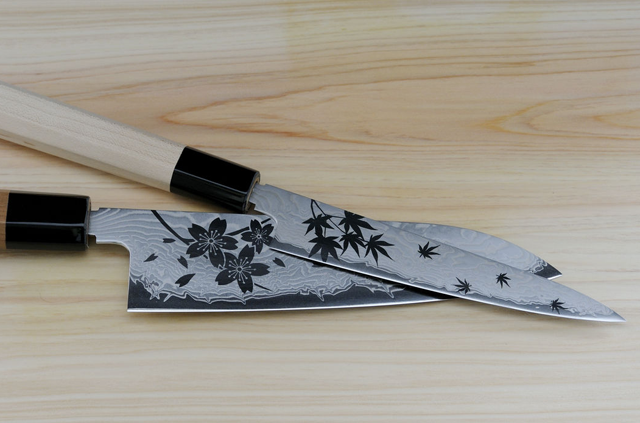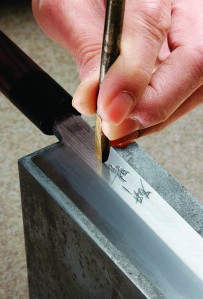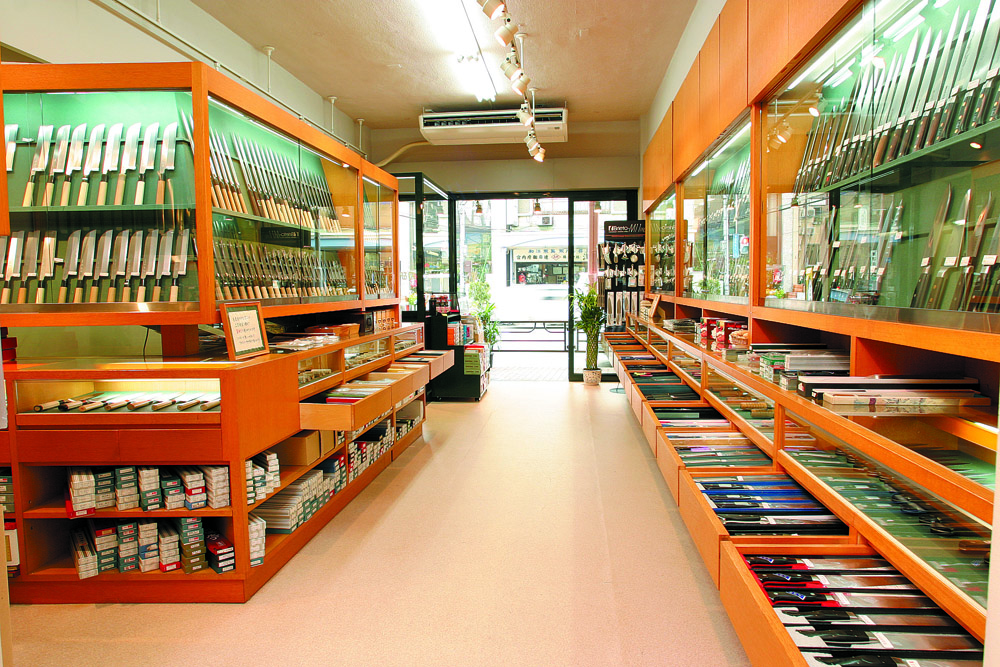The head of an Asakusa knife emporium explains the secret behind matching a customer with the perfect knife.
For a professional chef, or someone who loves cooking, a well-made knife is more than just a simple tool: in the kitchen, it can become an extension of the user’s hand.
But, like any piece of equipment, a knife must be taken care of: a traditional Japanese knife, or wabōcho, has a carbon steel blade that must be dried and oiled after use, or it will quickly rust, eventually damaging the metal. And even a Western-style stainless steel knife needs sharpening to maintain its edge. With so many different types of knives available, each one requiring its own type of maintenance, the choices can be daunting for someone looking to step up to a higher quality knife, or to make the transition to a Japanese-style knife. This is where an expert’s advice can help, and Seiichi Kamata, proprietor of Kamata Hakensha, is one such expert.
The family has been in the knife business since 1923, when Seiichi Kamata’s grandfather opened a shop in the Asakusa neighborhood, where he sharpened and maintained knives for restaurants and private customers around the area. The business expanded to selling knives (both Western and Japanese), and Kamata has also founded the in-house brands Kenmax and Togiharu. Yet, true to the family tradition, the heart of the business is still based around the sharpener’s craft, so when we paid a visit to the shop, it was no surprise to find Kamata’s son at the shop’s grindstone, sharpening a customer’s knife.
The combined wisdom of generations of experience in maintaining knives has given Kamata insight into what all types of customers need, and the shop carries a wide array of knives that come in all shapes and sizes: heavy cleavers, thin-bladed knives used for slicing fish, and even specialized knives for preparing unagi, or eel. Some of the most striking pieces can be found in the back of the shop, where you can find wabōcho decorated with maple leaf or cherry blossom patterns, or Western knives made with the characteristic wave-like patterns of Damascus steel. Many of his foreign customers buy the more exotic knives as souvenirs or gifts.
However, if a customer is using the knife for cooking, Kamata warns that the most important thing for a buyer to be sure of is exactly what they want from their knife, and this can depend on the type of cuisine they are preparing. Western-style cooking generally involves chopping through harder materials, and as sharp as the blade of a Japanese knife may be, the thin fine blade will chip if it is used for rough cutting. Finally, whether a customer is purchasing a Western-style knife or a Japanese one, Kamata recommends that they “step up” gradually in their purchases, instead of buying a knife that doesn’t meet their particular needs.
That said, some of Kamata Hakensha’s clients work at some of Tokyo’s most renowned restaurants, and through the store’s broad network of craftsmen and factories, Kamata can offer a degree of customization that other stores can’t match. For example, many clients have been asking for handles made of harder wood such as black persimmon, or a type of cedar found only on the island of Yakushima.
Whether it’s a factory-made knife or a one-of-a-kind blade, the staff personally inspects each piece before putting it on the shelf for sale. A popular service at the store is custom engraving, which can be done in English or Japanese—Kamata speaks English, and he can help foreign customers choose the most appropriate way to write their names in kanji or katakana. The store takes care to educate their customers about the proper use and maintenance of their new purchases, and each knife comes with a detailed set of instructions for proper use and upkeep.
So if you’re looking for a unique gift or souvenir, a piece of craftsmanship that will last you for years to come, or if you want to breathe new life into a knife that you’ve had for a while, visit Kamata Hakensha.
Kamata Hakensha (Kenmax, Inc.)
Address: 2-12-6 Matsugaya, Taito-ku, Tokyo (see map below)
Phone: 03-3841-4205
Web: kap-kam.com/index_english.html











